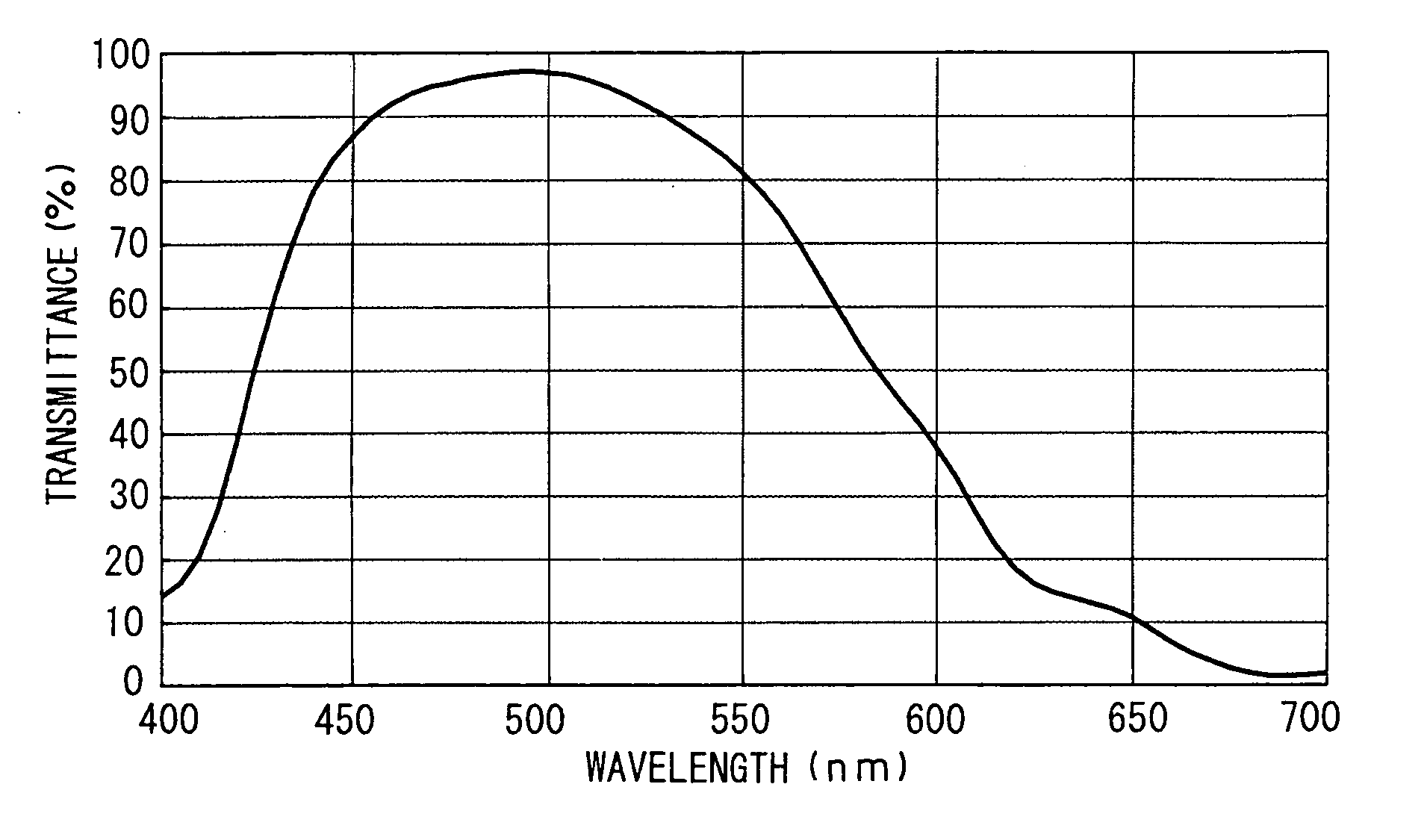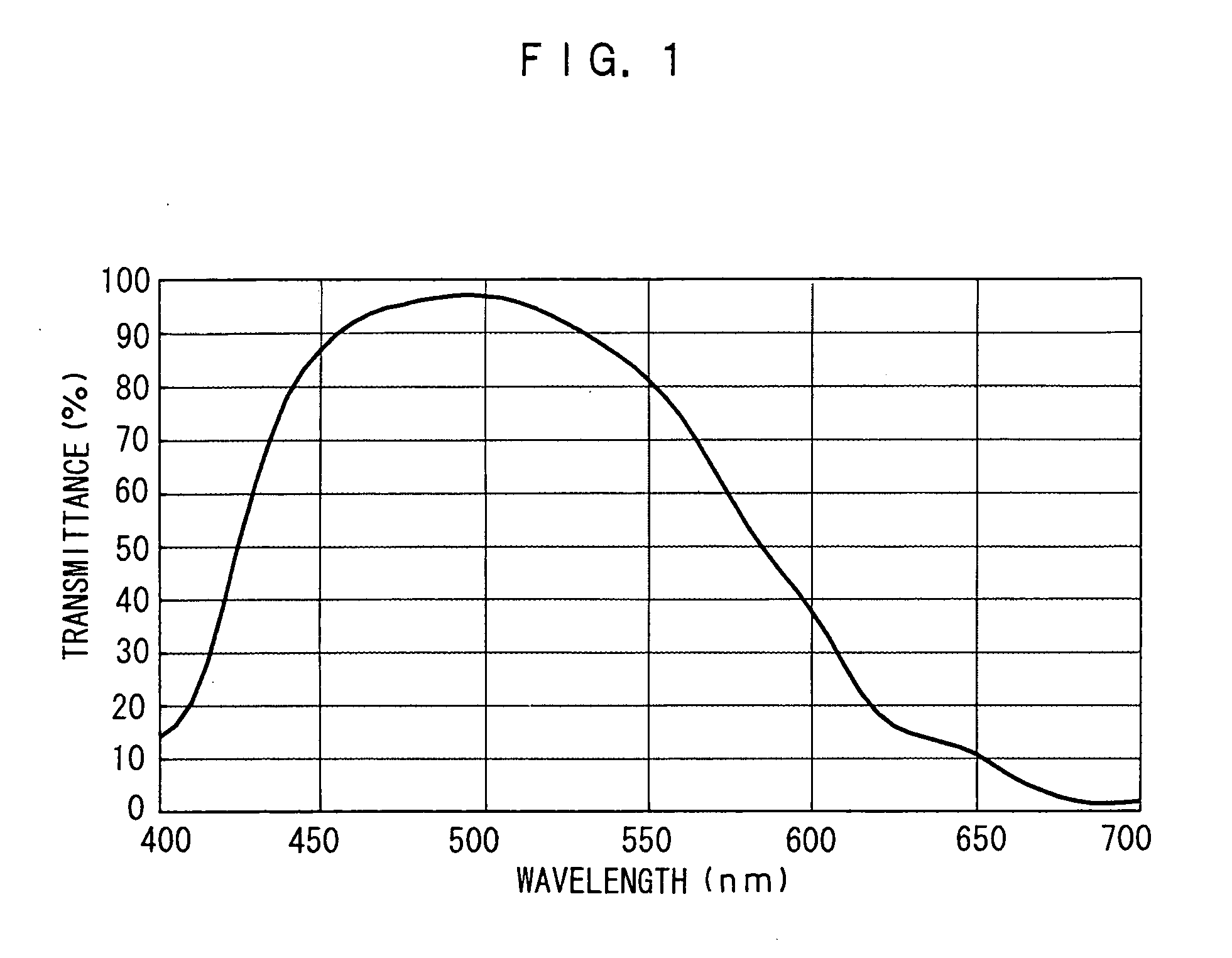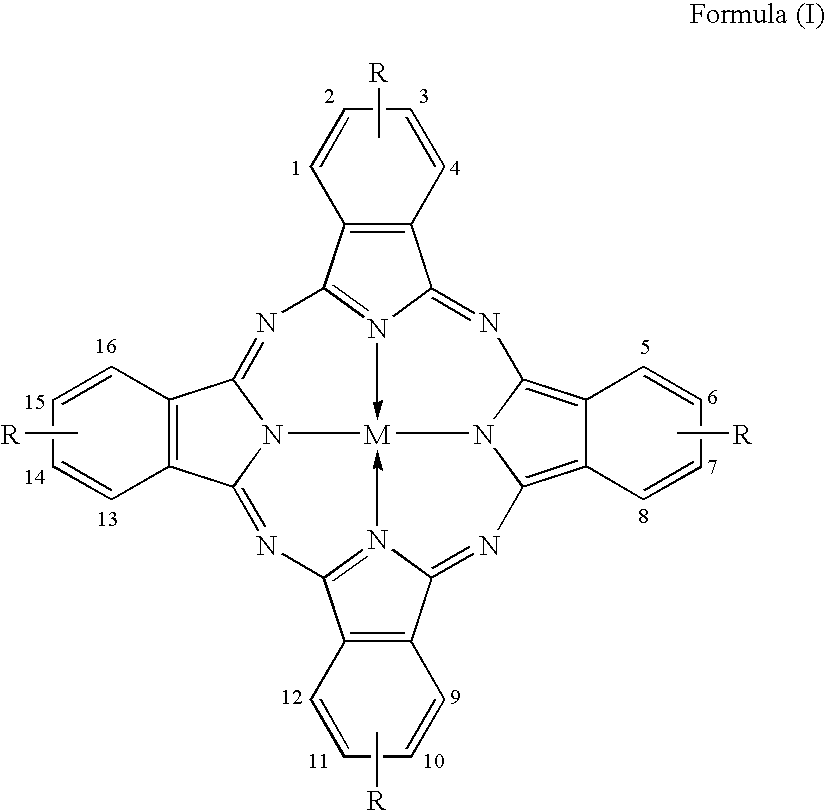Dye-containing curable composition, color filter and method of producing the color filter
a curable composition and dyeing technology, applied in the field of dyeing curable compositions, color filters and methods of producing color filters, can solve the problems of difficult uniform control unsatisfactory dyeing and fixing characteristics, and undesirable uneveness in color, so as to improve the uniformity improve and reduce the effect of dyeing and fixing characteristics
- Summary
- Abstract
- Description
- Claims
- Application Information
AI Technical Summary
Benefits of technology
Problems solved by technology
Method used
Image
Examples
synthetic example 1
Synthesis of Exemplified Compound (1)
1) Synthesis of a Phthalonitrile Derivative
[0035] 4.5 g of benzimidazole, 5.5 g of 3-nitrophthalonitrile, 8.5 g of potassium carbonate anhydride and 30 ml of dimethylsulfoxide were prepared and reacted at 72° C. for 4 hours. 300 ml of water was added to the reaction product to precipitate crystals, which were then collected and dried to obtain 7.3 g of 3-(1-benzimidazolyl)phthalonitrile (phthalonitrile derivative). Analytical data of this phthalonitrile derivative are as follows.
[0036] IR spectrum (KBr): 2320 cm−1 (vCN)
[0037] Mass spectrum: 244 (M+) [0038] Melting point: 220° C.
2) Cyclizing Reaction
[0039] 0.7 g of zinc chloride, 4.2 g of DBU(1,8-diazabicyclo[5,4,0]-7-undecene) and 20 ml of 1-pentanol were added to 4.0 g of phthalonitrile derivative obtained above and the mixture was reacted at 100° C. for 11 hours in a nitrogen atmosphere. The obtained reaction product was filtered and then was washed with methanol to obtain 2.9 g of a cr...
synthetic example 2
Synthesis of Exemplified Compound (2)
[0040] Tetra-β-(1-benzimidazolyl)zinc phthalocyanine (exemplified compound (2)) was obtained in the same manner as in Synthetic Example 1 except that 4-nitrophthalonitrile was used as the raw material in place of 3-nitrophthalonitrile in the reaction 1) of Synthetic Example 1.
synthetic example 3
Synthesis of Exemplified Compound (3)
[0041] Tetra-α-(3,5-dimethylpyrazolyl)zinc phthalocyanine (exemplified compound (3)) was obtained in the same manner as in Synthetic Example 1 except that 3,5-dimethylpyrazole was used in place of benzimidazole in the reaction 1) of Synthetic Example 1.
PUM
| Property | Measurement | Unit |
|---|---|---|
| mass % | aaaaa | aaaaa |
| boiling point | aaaaa | aaaaa |
| thickness | aaaaa | aaaaa |
Abstract
Description
Claims
Application Information
 Login to View More
Login to View More - R&D
- Intellectual Property
- Life Sciences
- Materials
- Tech Scout
- Unparalleled Data Quality
- Higher Quality Content
- 60% Fewer Hallucinations
Browse by: Latest US Patents, China's latest patents, Technical Efficacy Thesaurus, Application Domain, Technology Topic, Popular Technical Reports.
© 2025 PatSnap. All rights reserved.Legal|Privacy policy|Modern Slavery Act Transparency Statement|Sitemap|About US| Contact US: help@patsnap.com



